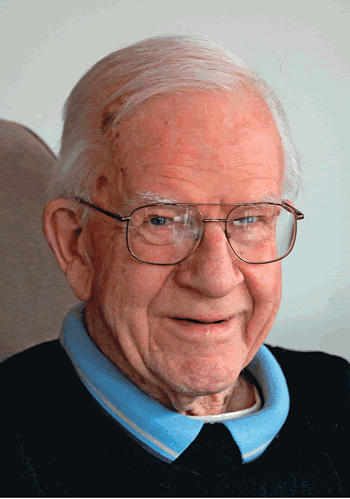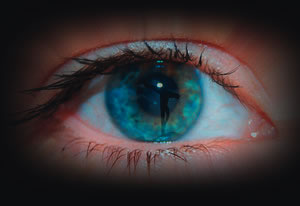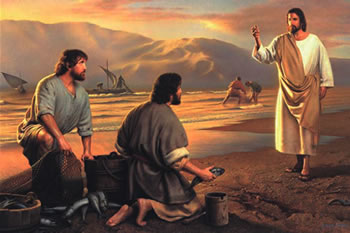Come and See — Really See — Jesus, and Have Life (1)

By Fr Tony King sm
As we follow Jesus, as it were, and those associated with Him in John’s Gospel, we encounter a recurring refrain, a refrain that extends an invitation to them, but also to us. The refrain is: "Come and see."
Sometimes that invitation is given in those words; sometimes it is implied; sometimes, rather, it is a failure to see or to see properly.
We first find this invitation on Jesus’ own lips (John 1:39). It is addressed to the two disciples of John the Baptist who have just heard the Baptist proclaim Jesus to be the Lamb of God and have gone after Jesus. When they ask Him where He lived, He said, "Come and see."
 We are not told anything about where Jesus was living, but are told that they spent the day, many hours, into the next day, with Him. Some significant ‘seeing’ there!
We are not told anything about where Jesus was living, but are told that they spent the day, many hours, into the next day, with Him. Some significant ‘seeing’ there!
The next day Andrew, one of the two, went to find his brother Peter. Andrew didn’t actually say "Come. See," but equivalently, "We have found the Messiah," and Andrew took him to Jesus, took him to see Jesus (John 1:42).
Shortly afterwards, they leave for Galilee and Jesus calls Philip. Philip then found Nathanael and told him "We have found Him of whom Moses wrote." And Nathanael’s response, on learning it was Jesus of Nazareth, was "Can anything good come from Nazareth?" (John 1:46).
"Come and See," Philip said. After ‘seeing' Jesus (much more than physical sight), Nathanael calls Jesus the "King of Israel." In Chapter 3, Nicodemus, a leader of the Jews, was not invited to come and see, but he did go by night to ‘see’ Jesus.
In their conversation, we notice already that the ‘real’ seeing of Jesus, the enlivening seeing of Jesus, is one of faith in Him, in His person, in His message. In reply to his visitor’s question as to how a person can be born again, Jesus says:
God loved the world so much that He gave His only Son, so that everyone who believes in Him . . . may have eternal life (John 3:16).
God in His love offers His Son to be ‘seen’ as the source of life.
On one of His many journeys, Jesus, very weary, sits by a well (John 4). A woman of Samaria comes to draw water and enters into conversation with Him. Jesus speaks of the "gift of God" which is like living water, "welling up for eternal life."
The woman had come to obtain water. But now, after seeing and hearing Jesus, she leaves her water jar by the well, and returns to the town. What does she tell the people? "Come and see!"
Come and see a man who has told me everything I have done. Could He be the Christ? (John 4:29).
And the townspeople did come to a ‘real’ seeing of Jesus, and the woman, too, no doubt. For Jesus accepted an invitation to stay with them for two days. Then they said to her:
Now we no longer believe because of what you told us. We have heard Him ourselves and we know that He is indeed the Saviour of the world (John 4:42).
These Samaritans show up the lack of openness and receptivity of the Jewish people who witnessed Christ’s feeding of the multitude [John 6]. After the miraculous feeding, they wanted to try and make Jesus king, perhaps thinking this wonder-worker could free them from the Roman yoke. A little later, after He and they had crossed the lake, Jesus, proclaiming Himself as the Bread of life, says to them:
As I have told you, you can see me and still you do not believe.
A few minutes later, He tells them what really seeing Jesus is and what such sight offers:
It is my Father’s will that whoever sees the Son and believes in Him, shall have eternal life, and that I should raise that person up on the last day (John 6:38).
We move along with the Lord, and we have such a moving account of a person who comes to see and then comes to ‘see’ again, really. It is the account of the man born blind (John 9).
Just before Jesus daubed the man’s eyes with a paste He had made, He declared Himself to be "the light of the world." Light brings life with it!
Having anointed his eyes, Jesus sends the man to wash in the waters of the pool of Siloam. The man does so, and for the first time ever, he does see.
The Pharisees interrogate the man repeatedly and the man, through his responses, is himself coming to a fuller, clearer knowledge of the one who has given him sight. He even asks the Pharisees if they want to become disciples!
They reject him. Jesus, hearing this, finds him. And asks him a question – about his seeing:
‘Do you believe in the Son of Man?’ ‘Who is he, sir, that I may believe in Him?’ ‘You have seen him, he is speaking to you.’ The man said ‘Lord, I believe’ and worshipped Him.
The man who had been born blind had come to a fuller, more life-giving ‘seeing’ – the seeing of Jesus as the source of life, the seeing of Him in faith.
To be continued
 Entries(RSS)
Entries(RSS)